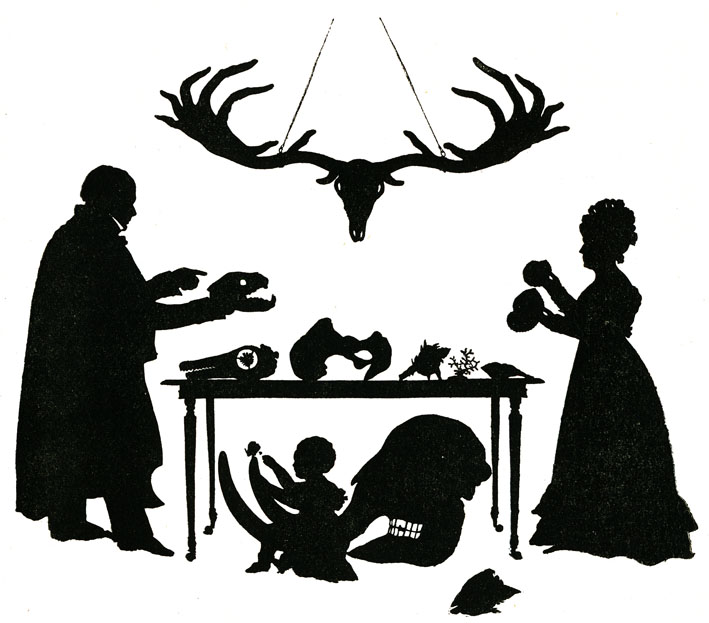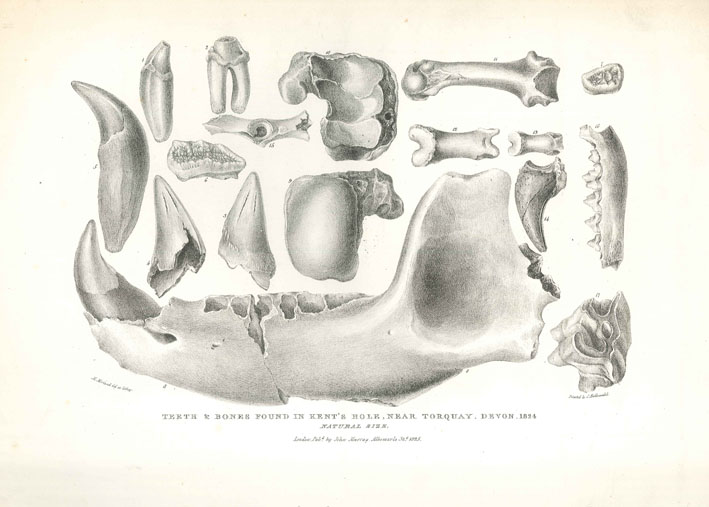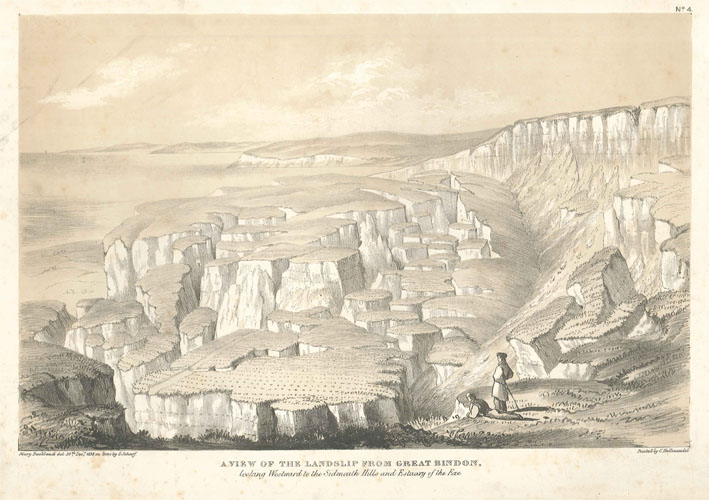Mary Buckland née Morland (1797-1857)
 |
Silhouette of the geologist William Buckland and his wife Mary, both examining their respective palaeontology collections.
Their son Frank is playing underneath the table. Taken from the 'Life and Correspondence of William Buckland, DD, FRS, Sometime Dean of Westminster, Twice President of the Geological Society and First President of the British Association', John Murray, London (1894), p103.
Mary Morland was born in 1797, at Sheepstead House, Abingdon, Berkshire, the eldest daughter of the solicitor Benjamin Morland (1768-1833) and his wife Harriet Baster (1777-1799). It was Mary’s father who initially stimulated her interest in geology, but following her mother’s early death she spent much of her childhood living with Sir Christopher Pegge, Regius Professor of Anatomy, Oxford, and his wife. Pegge, who additionally lectured in geology and mineralogy, encouraged Mary’s scientific pursuits and after his death in 1822, left Mary ‘‘his mineral cabinets and all the minerals and fossils contained in them at the time of my decease and all my books of natural history and comparative anatomy as a mark of my esteem and regard for her.’’
Mary’s skills as a scientific illustrator had already seen her submit drawings to George Cuvier and William Daniel Conybeare, before her first meeting with her future husband William Buckland, then professor of mineralogy and geology at Oxford, some time before 1819. Their daughter, Mrs Gordon, related an anecdote of their first meeting in her biography of William Buckland:
“…Dr Buckland was once travelling somewhere in Dorsetshire, and reading a new and weighty book of Cuvier’s which he had just received from the publisher; a lady was also in the coach, and amongst her books was this identical one, which Cuvier had sent her. They got into conversation, the drift of which was so peculiar that Dr Buckland at last exclaimed, ‘You must be Miss Morland, to whom I am about to deliver a letter of introduction.’”
On Buckland obtaining the canonry of Christ Church, the two were able to marry in December 1825, and their following wedding tour of the continent lasted nearly a year during which they met other natural scientists such as Cuvier and Alexander von Humboldt.
After her marriage during which she gave birth to nine children, Mary’s opportunity for scientific pursuits were limited. Additionally, her husband disapproved of women publicly engaging in scientific pursuits, however he relied on his wife’s scientific knowledge and proof reading abilities to support his geological lectures as well as her co-operation in his experiments.
William Buckland died in August 1856, and although Mary herself was in poor health, she continued her scientific studies – collecting and investigating marine zoophytes and sponges – until her death just over a year later.
Click on the links below to find out more:

